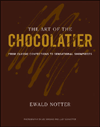It turns out that redesigning the candy aisle can increase confectionery profits by 25 percent. Compare that to the typical category growth of 2-3 percent, and that number looks pretty impressive.
Whether or not it’s impressive enough for a full renovation and more space is something retailers have to decide, but again, 25 percent is no small number. And it’s a great stat for Hershey to site when the company tries to convince retailers to redesign their confectionery aisle and install what the chocolate maker calls its “Candy Experience.”
The Candy Experience is akin to a candy store within a store that Hershey designed to make the confectionery aisle more enticing. It’s typically set up in high-traffic areas near the front entrance, and features curved displays, bright graphics and easy-to-shop sections sorted by category.
In short, everything about the Candy Experience is different from what shoppers have come to expect in the candy aisle at a mass retailer.
“It’s about Hershey solving problems for the shopper, and the retailer by creating a fun, and what I call a smart candy shopping experience,” explains Rick Price, senior manager in Hershey’s Merchandising Center of Excellence.
Hershey launched the project about a year ago at a Winn-Dixie supermarket in Baton Rouge, La., and the candy maker has come away with some solid data on why redesigning the candy aisle is so important.
“The shopper rules our world, and when we talk to the shopper, over three-fourths of the shoppers are not happy with the current candy aisle experience,” he explains. “There’s so much clutter in the aisle, it’s hard for them to shop. It’s almost like a bowling alley when you go to a typical store — there’s so many items in the candy aisle, 500-800 items, and it is so hard for the shopper to find the item that they want.”
It was those problems that the team at Hershey started with when they began to create a new type of candy aisle.
“There is this love and passion for confections, like no other category,” Price says. “There’s all these good vibes. Candy is a big smile... so when you have this passion and love and then you have a problem in the aisle, there’s this disconnect.”
The first step to creating that new section was reaching out to the very people they were trying to entice — consumers.
“I spent two years talking to shoppers in different cities — in Chicago, Atlanta, Denver,” Price says.
Shoppers told them they didn’t want just a long aisle and they wanted the section to be organized by category. So, for example, all the chocolate candies would be in one section, while all gums and mints would be in another, and the chewy candy would be in another.
Then, Hershey worked with a design agency to create a shopper-centric solution. The end result was the Candy Experience, with its large white, curved displays that kind of look like pods, each topped with splashy graphics, like a 3-D Reese’s Peanut Butter Cup or a large red M&M.
“Women, they helped us with this design. They don’t like the end caps with sharp edges, they really helped us design something more circular, something they can shop around more easily,” Price says. “It’s more inviting.”
The confectionery section is also customized for local markets to highlight top selling brands in a specific area.
“Overall, it’s just a much more pleasant shopping experience,” Price says. “The dwell time in the aisle has increased. And the shoppers see more variety, even though there’s not more variety, they just perceived it as more variety.”
Indeed, the section still features the same number of items as a traditional candy aisle — between 500-800 SKUs — but it’s organized in a way that seems less crowded. However, the new section does require more space in the store. In total they need about 729 sq. ft. (27 ft. x 27 ft.), but finding the extra room hasn’t proven to be too challenging.
“There’s this trend toward ecommerce, so some of the categories in the store are actually shrinking,” Price says. “The cereal category is declining, so you don’t need as much space. Think of paper towels, toilet paper, you don’t need all these shelf spaces. Many of these categories are evolving online. So where that space frees up, it allows us an opportunity.”
The new candy sections do require some major construction, so they are usually installed during a store renovation, which most retailers do about once every seven years. And they also take time. Price says the goal right now is to install the Candy Experience in one store per quarter.
But all the effort is worth it. Price says stores can expect to see payback from the section in less than two years.
“The beauty of this is it’s kind of starting to snowball, I’m working with a lot of different retailers on this same exact solution and we’re seeing great success with this,” he explains. “You have to plan this out about three months in advance, and to get the right components, and it’s one store at a time, one customer at a time.”
The sections also don’t incorporate seasonal candy, but Price says they are working on that.
“We have not yet conquered seasonal, that would be the next phase of this project,” he explains. “We want to get the candy aisle experience right. One of the big concerns we had going into this was, were we going to cannibalize seasonal by doing this? And we have not. This has been win-win for the store.”
Also, the candy displays are really ideal for a large format retailer, but Price says they are working on creating solutions for different retailers, such as convenience stores.
“We’re testing it in smaller formats right now,” he explains. “It’s really collaborating with and consulting the retailers, to be efficient and profitable.”
Of course, it’s impossible to ignore the fact that the section is being designed by one specific candy maker, which could make other companies nervous. But Price says Hershey has worked hard to be very fair about the design, even featuring competitors, like Mars’ M&M’s, front and center on the displays.
“The reason Hershey can spearhead this is... we are typically the category captain, so we think of Hershey as the adviser for the candy aisle in general,” Price says. “We write their planograms, so we make all these recommendations, so we’re already the company of record, and because we look holistically... we’re going to allocate the right amount of space, whether it be M&M’s Mars or Nestle, we’re always looking out to do the right thing for the category.”
In the end Hershey just wants to make the candy aisle as fun as the candy that’s on display.
“Really it’s about seeing happy shoppers. Seeing this frustration that’s out in the marketplace in a fun category really lit a fire here for the Hershey Co.,” Price says. “We leveraged insight — we didn’t go out and do this on our own — and then we put together an action plan. And the shopper speaks not only from just seeing the smiles, but the sales results, and the retailers are thrilled because there are more loyal customers in their store. It’s really a fun project.”















